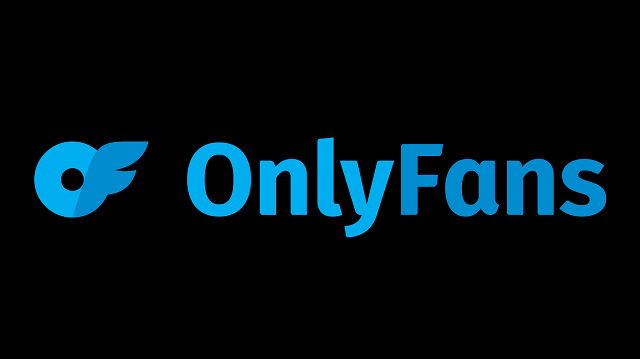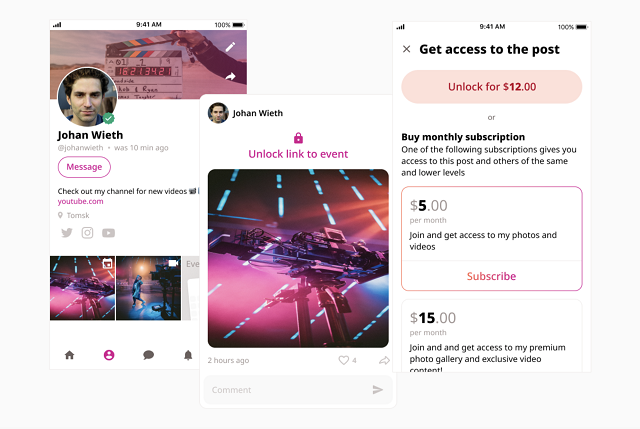There’s a quiet rebellion going on across the internet. Creators, educators, and niche communities are walking away from platforms they can’t control — tired of shifting rules, sudden demonetizations, and shrinking payouts. What they’re building instead? Their own platforms, and the rise in real-world membership website examples shows just how powerful that shift has become.
This shift isn’t just about independence. It’s about sustainability. Owning a membership site means building something long-term, with your rules, your audience, and your brand. From skill-sharing hubs and private masterminds to fan clubs and adult content creators — the direct-to-audience model is exploding.
Look at the landscape: Patreon popularized the subscription tier concept. Substack proved newsletters could become businesses. OnlyFans turned exclusive content into a billion-dollar formula. But now, more people want to move past templates and walled gardens. They’re ready to build custom platforms, made for their audience and their income model — not someone else’s.
And the numbers back it up. The subscription economy is projected to pass $1.5 trillion in 2025, driven not just by corporate media but by independent creators stepping into the spotlight.
In this article, we’re diving into real, inspiring membership website examples — not just glossy templates, but smart, working models across industries. We’ll explore what they’re doing right, how they’re growing, and how you can take what works and build something of your own.
Let’s get started.
Why Membership Sites Are Still Booming in 2025
Owning your own platform is no longer optional — it’s becoming the norm. More and more creators are stepping away from algorithm-heavy, revenue-sharing platforms and opting to build something they fully control. In 2025, the membership model has matured into a stable, flexible, and proven business engine. From niche instructors to adult entertainers to community leaders, digital entrepreneurs are realizing the power of direct access and direct income.
It’s not just about chasing trends anymore. It’s about building something that lasts.
The Big Three: Why It Works
These aren’t marketing buzzwords — these are the reasons creators are turning away from the noise and choosing membership models as the foundation for their online business.
Recurring Revenue
Revenue spikes from a product launch feel good. But what happens next month? A membership model smooths out that rollercoaster. With even 200 members paying $20/month, you’re looking at $4,000/month in reliable income. And it grows over time. Many creators are building their strategy around paid membership website ideas like premium community access, content libraries, or coaching groups — because it’s more predictable, less stressful, and easier to scale.
Community Building
People want more than content. They want connection. Membership sites provide space for that — whether it’s weekly livestreams, challenge groups, or active discussion boards. A true community doesn’t just consume. It interacts, asks questions, offers feedback, and creates energy that keeps people coming back.
Creators who lean into this often see a dramatic difference in churn rate. A well-run membership with strong community features can retain users for 6–12 months on average, far beyond what most newsletter or content subscription models achieve. That’s not theory — it’s proven in real data from private Slack groups, coaching pods, and high-retention Discord servers.
Creative Freedom
Mainstream platforms have one thing in common: restrictions. Whether it’s sudden policy updates, unclear community guidelines, or automated bans, creators are constantly at risk of losing their work — or their income — overnight. Building a private membership site means you’re in control. Your rules, your content, your terms. This is especially crucial for those in sensitive niches, including adult content, where platforms like OnlyFans offered a short-term solution but didn’t solve the long-term issue of platform dependency.
By launching a self-hosted site, creators can experiment freely, offer exactly the kind of experience their audience wants, and create a space that reflects their personality and brand. It’s the difference between renting space and owning it.
And once you’re off someone else’s platform, you’re free to experiment with content, monetization, and delivery. You’re building not just a following, but an ecosystem — one where you own the brand, the audience, and the revenue.
Popular Business Models for Membership Sites

Membership sites aren’t a one-size-fits-all solution — and they shouldn’t be. In 2025, the most successful ones are built around models that match both the creator’s strengths and the audience’s expectations. Whether you’re building a small private coaching circle or launching the next OnlyFans alternative, the core mechanics are about access, value, and retention.
Here are the five most common and proven approaches creators are using now — with flexibility to combine and customize as needed.
Content Libraries
This is one of the most scalable ideas for membership sites, especially for educators and digital creators. Members get access to a vault of lessons, templates, downloads, or tools — updated over time. Think of it as a private Netflix for your niche.
From pre-recorded yoga flows to photography tutorials, the appeal here is passive learning at your own pace. These sites often use a tiered system based on access level, content type, or download rights.
Community Access
Sometimes, content is secondary to connection. Membership communities offer a private, trusted space for people to interact, grow, and support each other. This could be a Discord server for indie developers, a mastermind group for solopreneurs, or a members-only chatroom for fans.
It’s a great structure for those exploring subscription site ideas that revolve around long-term engagement. Community is one of the strongest tools for retention — and for building something that feels meaningful.
Adult Content and Fan Access
This category deserves its own spotlight. Creators in the adult industry, or any creator offering exclusive content to fans, often follow the model popularized by OnlyFans: pay-to-unlock content, tipping, subscriptions, and private messaging.
It’s not just about explicit content. Many creators — from fitness instructors to musicians — use the paid membership website ideas behind platforms like OnlyFans, but want more freedom. They want to control the branding, choose their features, and avoid platform bans.
This is where fully customizable development solutions like Scrile Connect come into play — giving creators the power to build an OnlyFans-style membership site under their own name and domain.
Coaching and Mentorship Programs
Coaches, consultants, and trainers often choose models that combine structured learning with direct access. These sites include video lessons, downloadable PDFs, and live sessions. Many use application-only membership to keep groups small and high-value.
This model pairs well with exclusive communities and works across industries — from mindset coaching to startup accelerators.
Digital Product Clubs
Designers, developers, and writers often launch memberships around digital assets — things like icon packs, templates, or resource libraries. The model blends e-commerce and community. Members subscribe for monthly drops, curated bundles, or full library access.
With the right membership site template, these sites feel more like boutique storefronts than traditional courses — and often drive high retention with monthly updates and exclusives.
Design Matters: What Great Member Sites Have in Common

Even with great content, a poorly built site can kill your membership before it gets off the ground. Design isn’t just about how things look — it’s how people experience your platform. In 2025, the best membership sites aren’t the flashiest. They’re the cleanest, clearest, and easiest to use.
The difference often comes down to the details. Here’s what sets successful platforms apart.
Clear, Simple UX
Visitors shouldn’t need a map to find content or understand what they’re paying for. Clean navigation, intuitive layouts, and smart page structure are the foundation of any strong member website design. Confusion kills conversions — and trust.
Your homepage should immediately answer two questions: “What do I get?” and “Why should I care?”
Mobile-First Functionality
Most users access membership content from their phones — not desktops. If your design doesn’t adapt, you’ll lose them. The best membership website templates today are mobile-optimized by default, with responsive video players, tap-friendly buttons, and scrollable content sections that don’t break on smaller screens.
Personalization
Generic doesn’t sell. The most engaging sites personalize content based on tier, progress, or past behavior. Whether it’s a welcome message, saved content dashboard, or a progress bar for completed modules, this is what makes users feel like they belong.
Smart Access Controls
The freemium model is alive and well. Successful sites use smart gating to allow free previews, limited access, or trial content — while protecting premium material behind membership walls. A solid membership site template should support multiple access levels without needing complex workarounds.
Secure Payments and Content Protection
Trust is everything, especially in niches like coaching, adult content, or exclusive tutorials. Users want to know their payments are processed securely and their personal info is safe. Likewise, creators want assurance that premium videos or PDFs aren’t easily leaked or ripped.
Whether you’re running a fitness academy or building an OnlyFans alternative, your design has to do more than look good. It has to perform — for you and your members.
7 Inspiring Membership Website Examples for 2025
There’s no such thing as a “perfect” membership model — only the one that fits your audience, your voice, and your goals. In 2025, creators are building ecosystems that look nothing like each other but share one thing in common: they work. These eight real-life membership website examples offer a look at what’s possible when the right concept meets the right structure.
OnlyFans — The Blueprint, and Why Many Are Outgrowing It

OnlyFans is the most recognizable membership platform in the adult content space, but its influence goes far beyond one niche. It’s one of the clearest membership website examples of how creators can build a direct-to-audience revenue stream without relying on traditional media, brands, or algorithms. Subscriptions, tipping, pay-per-view messages — everything is designed to support creators getting paid directly for their work.
At its peak, OnlyFans was seen as a revolutionary tool for independent creators. But in 2025, more users are starting to see its limits. You can’t brand your experience. You don’t control your domain, data, or features. Content moderation policies are vague and unpredictable. And even high-earning creators risk deactivation with no warning or recourse.
Still, its impact is undeniable. OnlyFans proved that fans are willing to pay for access, not just content. It’s a proven model — but not one creators want to be locked into long-term.
What makes it work:
- Built-in monetization: subscriptions, tipping, and paywalled content
- No coding or setup required — creators can launch fast
- Huge user awareness across adult, fitness, lifestyle, and fan-content spaces
- Easy for new creators to start testing paid content ideas
What holds it back:
- No brand customization or domain ownership
- No access to user data or analytics
- High risk of deplatforming and policy-based income loss
- Creators can’t scale or differentiate without leaving the platform
Takeaway: OnlyFans is an important starting point — not a destination. Creators looking to scale, build a brand, and future-proof their income need to move toward owning their own platform.
Soulcial Mate — Coaching Creators Through Structure and Strategy
Soulcial Mate, founded by Kristen Bousquet, is a membership site tailored to a very specific audience: aspiring influencers who want to turn content creation into a full-time business. But unlike many generic coaching sites, this one is focused, structured, and personality-driven. Kristen doesn’t just offer motivation — she gives members an actionable system built around pitching, pricing, and planning.
What makes Soulcial Mate so effective is how clearly it understands its audience. Everything — from the site’s branding to its lesson titles — speaks directly to creators who feel stuck between working with brands and building sustainable income. Members don’t just get content templates and outreach guides; they also get access to Kristen’s weekly calls, real talk about burnout, and a supportive peer group of people trying to do the same thing.
The visual identity is consistent across her content, and the tone remains relaxed but authoritative. It feels like a space created by someone who’s lived the struggle — not someone teaching from a pedestal.
What makes it work:
- Clear niche targeting: creators looking for business systems and support
- Personal branding carries trust from Instagram, TikTok, and YouTube
- Mix of educational content and direct coaching
- Community access adds accountability and emotional support
What holds it back:
- Content is tightly focused — less useful outside the influencer world
- Heavy reliance on the founder’s personal time and voice
- Scaling the experience requires additional coaches or delegation
Takeaway: Soulcial Mate shows that specificity builds loyalty. You don’t need to reach everyone — you just need to deeply serve one audience with clarity, consistency, and a strong point of view.
Dunbar Academy — Expertise That Builds Trust Over Time

Dunbar Academy is a membership website built around one of the most trusted names in dog training: Dr. Ian Dunbar. Instead of trendy tricks or influencer-led pet content, this platform offers grounded, science-based training from a professional with decades of experience. The content is cleanly structured, organized by difficulty, and designed to take both dog owners and aspiring trainers through a full curriculum.
What stands out most is the site’s authority. You’re not just getting tips from someone who owns a dog — you’re learning from someone who helped define modern, humane training techniques. This credibility creates instant trust, which is one of the strongest conversion tools any membership site can have.
The content itself includes video courses, PDF downloads, and seminar replays. New material is added periodically, but the platform is built more like a textbook than a constantly-updating newsfeed — and that’s exactly what its audience wants.
What makes it work:
- Trusted expert brand with decades of proven results
- Curriculum-style structure appeals to both casual and professional learners
- Affordable monthly pricing model opens it to mass audiences
- Evergreen content ensures long-term relevance and low churn
What holds it back:
- Minimal community features — learning is mostly solo
- Outdated visual design may reduce perceived value
- No certification or skill verification for users who complete the material
Takeaway: Authority and structure go a long way. If you’ve built expertise in a subject — or have credentials others in your space don’t — a well-organized educational membership can outperform flashier alternatives, even without a huge marketing budget.
Freelance Friday Club — Practical Help for a Growing Workforce
Freelance Friday Club, created by Latasha James, is a membership site designed for freelancers who are navigating the ups and downs of self-employment. It’s not built on hype or vague motivational content — it’s about actionable strategies, peer support, and real-world tools that help members move their freelance careers forward.
The site combines a mix of recorded trainings, live Q&A sessions, curated templates, and exclusive community access. What makes it work is the balance between on-demand learning and live connection. Members can grab a new contract template on Monday, then hop into a call on Wednesday to get feedback on pricing or positioning. It bridges the gap between solo work and structured support.
Freelance Friday Club also functions as a natural extension of Latasha’s existing content ecosystem. Her YouTube channel and podcast bring in leads, and her content is designed to funnel those viewers into the membership space — no hard sell needed.
What makes it work:
- Tiered pricing structure welcomes both beginners and experienced freelancers
- Includes a variety of content formats: video, documents, live sessions
- Strong brand voice carried over from free channels
- Built-in accountability through community and coaching
What holds it back:
- Focuses primarily on creative service providers — less relevant to other freelancer types
- Community engagement may dip without consistent facilitation
- Requires ongoing effort to maintain content freshness and host regular events
Takeaway: Freelancers want more than education — they want support and interaction. Sites like Freelance Friday Club work because they give members tools and a place to use them. If your audience needs both guidance and a sense of belonging, this model delivers.
Fitness Creator Sites — Simple, Sticky, and Results-Driven

Fitness creators have built some of the most reliable membership models out there — not with fancy features, but with focused content that keeps people coming back. These sites tend to offer a clean mix of pre-recorded workouts, structured training plans, and optional coaching — all built for daily use.
Most start with an audience on TikTok or Instagram, then convert loyal followers into paying members. The membership itself is often basic: a dashboard, a calendar, and a workout library. But because it’s so easy to use, members stick around for months.
Many fitness sites thrive on monthly challenges and goal-based programs. Some include group chats, others offer weekly live streams or video check-ins. But at their core, these memberships are all about results. If members feel better, look better, or hit personal milestones — they stay.
What makes it work:
- Clear value proposition tied to physical transformation
- Mobile-friendly layout encourages daily engagement
- Easy to scale using evergreen workout content
- Encourages upsells to nutrition plans or 1-on-1 coaching
What holds it back:
- Difficult to stand out without a strong personal brand
- Heavy reliance on the creator’s energy and availability
- Limited depth in many member website design approaches
Takeaway: In fitness, simplicity sells. A well-structured site with a daily-use rhythm can outperform complex platforms.
Digital Creator Collectives — Content, Community, and Collaboration
Digital creator collectives are an emerging trend in the membership space. These sites bring together designers, writers, marketers, and content creators to share tools, trade feedback, and co-create resources. Instead of one creator leading the charge, these platforms often feel like shared ecosystems — powered by peer expertise and constant collaboration.
Typically, members pay monthly or annually to access a shared content library: templates, swipe files, Notion systems, design packs, writing prompts, and more. The content is updated regularly, but what keeps people around is the discussion — usually via private forums, Discord, or Slack. It’s part toolkit, part community, and part mastermind group.
This model has grown in popularity among creators who want to move fast, iterate with others, and avoid building in isolation. It’s flexible, scalable, and refreshingly unbranded.
What makes it work:
- Content is co-created, keeping things fresh and relevant
- Offers a blend of community, resources, and accountability
- Lower pressure on a single “face” or founder to deliver everything
- Great for networking and cross-promotion
What holds it back:
- Quality control can be inconsistent without moderation
- Less structured than solo-teacher models
- Harder to monetize premium tiers without clear authority
Takeaway: For creators who thrive on collaboration, this is one of the most dynamic membership site ideas available today.
Baking for Business — Turning Passion into Profitable Skillsets
If you’re good with your hands and even better with buttercream, Baking for Business is proof that niche expertise still sells — and sells well. Created by chef and entrepreneur Amanda Schonberg, the site focuses on teaching home bakers how to turn their craft into a sustainable business.
This membership offers more than recipes. Members gain access to masterclasses, pricing calculators, templates for client outreach, and live Q&A calls. The goal isn’t just to teach baking — it’s to teach bakers how to earn, price, and market themselves in a competitive space.
Its strength lies in the simplicity and warmth of its presentation. Amanda isn’t flashy, but she’s relatable and trusted — the kind of mentor that makes people feel capable. That trust converts.
What makes it work:
- Ultra-specific niche: home bakers with business goals
- Blend of education and empowerment
- Low price point opens the door to hobbyists
- Content covers real-world problems like pricing and social media
What holds it back:
- Limited scalability unless more instructors are added
- Audience cap due to niche size
- May need UX upgrades to compete with newer membership website templates
Takeaway: When you speak directly to a problem people deeply feel, you don’t need a massive audience — just a hungry one.
The Problem with All-in-One Platforms
After looking at what successful membership sites have in common, one thing becomes obvious: the best ones feel personal, intentional, and completely in sync with the creator’s brand. That’s exactly where most all-in-one platforms fall short.
Services like Patreon, Kajabi, or even OnlyFans offer convenience, but that ease comes at a cost — and creators are starting to feel it. These platforms often force users into rigid templates, one-size-fits-all pricing models, and limited ways to present content. If your business needs flexibility, you’ll eventually hit a wall.
Branding is one of the first things to go. Most mainstream platforms don’t allow full control over layout, domain, or design. Your membership site ends up looking like everyone else’s — which weakens trust and kills long-term loyalty. In an era where personal connection drives engagement, being visually and structurally unique isn’t optional — it’s expected.
Monetization is another bottleneck. Want to combine subscriptions with pay-per-content and tipping? Maybe run limited-time offers or sell bundled courses? Too bad. Most platforms won’t support that — and if they do, they’ll take a cut of every transaction. Fees often climb as high as 20–30%, eating into revenue you could be reinvesting in growth.
Then there’s the content moderation issue. For adult creators or those in gray-area niches, the risk of being banned, demonetized, or throttled is always looming. A single policy update can wipe out your income overnight — and there’s rarely anyone to appeal to.
More and more creators are waking up to these limitations. The solution isn’t to work around them. It’s to build around your business. That’s where custom membership development — with full control over features, branding, and revenue — becomes the smarter move.
And that’s exactly where Scrile Connect comes in.
Scrile Connect — A Smarter Way to Build Your Own Membership Website

For creators who are ready to move beyond the limits of mainstream platforms, Scrile Connect offers a different path — one that puts full control back in your hands. Unlike SaaS tools that box you into fixed features and take a cut of your revenue, Scrile Connect is a development service that helps you build a fully customized membership site, tailored to your brand, your audience, and your business model.
You decide what your site looks like, how it functions, and how it earns. Whether you want subscriptions, tipping, pay-per-view content, or a mix of everything — it’s your call. Want to offer gated courses alongside a premium community space? No problem. Want a sleek dashboard with content scheduling, private messaging, or live streaming? It’s all possible.
With Scrile Connect, you get your own domain, complete control over UX, and access to backend tools that let you manage your content, users, and revenue — without sharing your profits with a platform.
This model works especially well for:
- Adult creators building an OnlyFans alternative with better branding and privacy
- Fitness instructors offering structured programs and progress tracking
- Coaches and mentors running closed mastermind groups
- Language teachers, spiritual guides, or artists creating niche communities
There’s no revenue share, no forced feature sets, and no content policy shifts to worry about. You own the platform, the data, and the future of your business.
If you’ve been collecting membership website ideas but hitting limitations everywhere you turn, Scrile Connect gives you the flexibility to build what you actually need — not just what a SaaS tool allows.
Conclusion
Building a successful membership site in 2025 isn’t about copying what others have done — it’s about creating something that fits your audience and your goals. Whether you’re teaching, coaching, creating, or building community, the tools now exist to do it on your own terms. If you’re ready to turn your membership website ideas into a fully custom platform, reach out to the Scrile Connect team today and explore what’s possible — together, we’ll build it right.
Read Also
Best Crowdfunding Platforms – Compare leading platforms to fund your next idea.
How to Start a Crowdfunding Platform – Build your own community-based funding site from the ground up.
Subscription-Based Content Platform – Create and monetize exclusive content behind a paywall.
Membership Site Software Comparison – Review top tools for launching a paid community.





